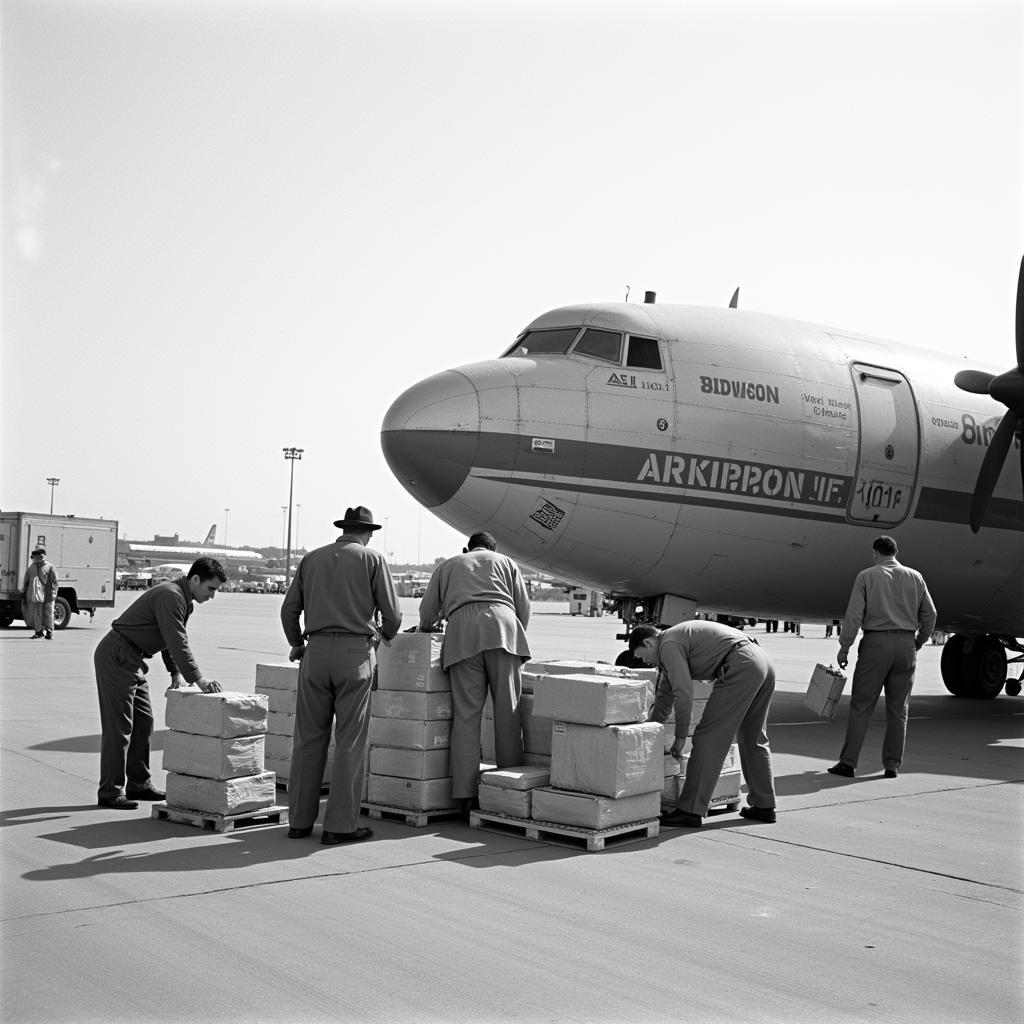The history of ASEAN air freight is a fascinating tale interwoven with the region’s economic rise and increasing global integration. From humble beginnings to becoming a vital artery of international trade, ASEAN air cargo history reflects the dynamism and potential that characterize Southeast Asia.
Early Days: Laying the Foundation
The early years of ASEAN air freight were marked by limited infrastructure and nascent demand. National carriers primarily focused on passenger travel, with cargo operations playing a secondary role. However, the region’s post-independence economic boom in the 1960s and 70s gradually spurred the need for more robust air cargo solutions.
 Early ASEAN Air Freight Operations
Early ASEAN Air Freight Operations
This period saw the establishment of dedicated cargo airlines and the expansion of cargo handling facilities at key airports. Governments recognized the importance of air freight in facilitating trade and attracting foreign investment, leading to policies aimed at liberalizing the aviation sector.
Taking Off: Liberalization and Growth
The late 20th century witnessed a paradigm shift in ASEAN air freight with the wave of economic liberalization sweeping the globe. The ASEAN region embraced open market policies, leading to increased trade and investment flows. This surge in economic activity fueled the demand for efficient and reliable air cargo services.
The liberalization of air service agreements within ASEAN and beyond fostered competition and paved the way for the entry of international players. This era witnessed the emergence of specialized air freight integrators like FedEx and DHL, revolutionizing the industry with their door-to-door logistics solutions and advanced tracking systems.
The New Millennium: Embracing Innovation
The 21st century brought about a technological revolution that significantly impacted ASEAN air freight. The rise of e-commerce, driven by increasing internet and smartphone penetration, created unprecedented demand for fast and reliable cross-border shipping. ASEAN, with its burgeoning middle class and young population, became a hotbed for e-commerce growth, further propelling the air freight sector.
This digital transformation led to the adoption of advanced technologies within the industry. Automated cargo handling systems, real-time tracking, and data analytics became integral to improving efficiency and transparency. Furthermore, the industry has witnessed a growing focus on sustainability, with airlines investing in fuel-efficient aircraft and exploring alternative fuels to reduce their environmental footprint.
ASEAN Air Freight Today: A Vital Link in the Global Supply Chain
Today, ASEAN air freight plays a pivotal role in the global supply chain. The region serves as a manufacturing hub for various industries, including electronics, textiles, and automotive, making air freight crucial for transporting components, finished goods, and time-sensitive products. The COVID-19 pandemic further highlighted the importance of a robust air cargo network, with the industry playing a vital role in transporting essential medical supplies and keeping global trade flowing amidst disruptions.
The Future of ASEAN Air Freight: Continued Growth and Transformation
The future of ASEAN air freight appears promising, driven by several factors. The region’s robust economic growth, expanding middle class, and increasing integration with global markets will continue to fuel demand for air cargo services. The rise of new technologies, such as drones and autonomous vehicles, presents both challenges and opportunities, potentially reshaping the industry landscape in the years to come.
As ASEAN continues its journey of economic development and global integration, its air freight sector is poised for further growth and transformation, cementing its position as a key player in the global air cargo market.
FAQ
What are the major air freight hubs in ASEAN?
Singapore Changi Airport, Kuala Lumpur International Airport, Suvarnabhumi Airport (Bangkok), and Soekarno-Hatta International Airport (Jakarta) are among the major air freight hubs in ASEAN.
What are the key challenges facing the ASEAN air freight industry?
Infrastructure constraints, regulatory harmonization, and the need for skilled labor are some of the key challenges faced by the ASEAN air freight industry.
What is the outlook for the ASEAN air freight market?
The ASEAN air freight market is expected to witness strong growth in the coming years, driven by factors like e-commerce, increasing trade, and infrastructure development.
How is technology transforming ASEAN air freight?
Technology is revolutionizing ASEAN air freight through automation, real-time tracking, data analytics, and the emergence of new logistics solutions.
What is the role of sustainability in ASEAN air freight?
The ASEAN air freight industry is increasingly focusing on sustainability through initiatives aimed at reducing emissions, optimizing fuel efficiency, and exploring alternative fuels.
Need Help with Your ASEAN Business Endeavors?
Contact us today! Our team at Asean Media is dedicated to providing valuable insights and resources for businesses operating in the region. Reach us at:
Phone: +84 369020373
Email: aseanmediadirectory@gmail.com
Or visit our office at:
Ngoc Lien Village, Hiep Hoa, Bac Giang, Vietnam.
We’re here to support you 24/7!

